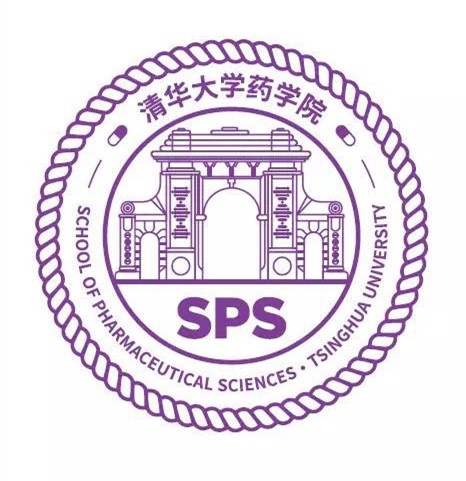
教育经历:
2008.08-2012.09 博士,杨代文教授课题组,新加坡国立大学综合科学与工程学院,新加坡国立大学
研究方向:利用核磁共振技术进行蜘蛛丝蛋白质结构和功能研究。
2004.09-2008.06 学士,国家生命科学技术基地, 山东大学
专业:微生物发酵
工作经历:
2019.03-至今 高级科学家,制剂产品开发部-生物大分子制药开发,强生(中国)。
2017.06-2019.02 组长2/高级研究员2,制剂产品开发部,药明生物。
专注领域:产品成药性开发评估,蛋白药物制剂和工艺开发。
负责二十多个蛋白药物制剂产品开发项目。
2014.04-2017.05 助理研究员, 钱锋研究员课题组, 清华大学
研究方向:生物药制剂研究,包括抗体和蛋白疫苗等
2012.10-2014.03 研究员,James P Tam 教授课题组, 新加坡南洋理工大学
研究方向:中草药多肽和合成多肽的结构功能研究
荣誉奖励
2014-2016 清华博士后基金,生命科学中心博士后基金,国家留学归国交流项目资助
2008-2012 NGS-PhD 奖学金
2004-2008 中科院奖学金,山东大学优秀学生一等奖学金并评为三好学生,山东大学新生奖学金一等,山东大学社会实践先进个人,
山东大学创新先进个人
代表性成果:
1. Wu G, Wang S (co-1st), Tian Z, Zhang N, Hu T, Dai W, and Qian F. (2017) Elucidate the weak protein-protein interaction mechanisms behind the liquid-liquid phase separation of a mAb solution by different types of additives. European Journal of Pharmaceutics and Biopharmaceutics (IF 3.975)
2. Wang S, Zhang X, Wu G, Tian Z, Li L, Zhao Q, Jiang G, and Qian F. (2017) The interplays of the Colloidal and Conformational Stability of a model Recombinant Protein in High-Concentration Liquid Formulation for Subcutaneous Administration. International Journal of Pharmaceutics
3. Wang S, Wu G. Zhang X, Tian Z, Zhang N, Hu T, Dai W, and Qian F. (2017) Stabilizing Two IgG1 Monoclonal Antibodies by Surfactants: Balance between Aggregation Prevention and Structure Perturbation. European Journal of Pharmaceutics and Biopharmaceutics (IF 3.975)
4. Wang S, Zhang N, Hu T, Dai W, Feng X, Zhang X, and Qian F (2015) Viscosity-lowering effect of amino acids and salts on highly concentrated solutions of two igG1 monoclonal antibodies. Molecular Pharmaceutics (IF 4.34)
5. Wang S, Liu H, Zhang X, and Qian F (2015) Intranasal and oral vaccination with protein-based antigens: advantages, challenges and formulation strategies. Protein & Cell (IF 3.82)
6. Wang S, Huang W, and Yang D (2014) Structure and function of C-terminal domain of aciniform spidroin. Biomacromolecules (IF 5.58)
7. Wang S, Huang W, and Yang D (2012) NMR structure note: repetitive domain (RP) of aciniform spidroin 1 from Nephila antipodiana. Journal of Biomolecular NMR (IF 3.44)
8. Chen Y, Wang S, Wang S, Liu C, Su C, Hageman M, Hussian M, Haskell R, Stefanski K, and Qian F (2016) Sodium lauryl sulphate competitively interacts with HPMC-AS and consequently reduces oral bioavailability of posaconazole/HPMC-AS amorphous solid dispersion. Molecular Pharmaceutics (IF 4.34)
9. Chen Y, Wang S, Wang S, liu C, Su C, Hageman M, Hussian M, Haskell R, Stefanski K, and Qian F (2016) Initial drug release from amorphous solid dispersions controlled by polymer release and drug-polymer interaction. Pharmaceutical Research (3.260)
10. Tam JP, Wang S, Wong KH, and Tan WL (2015) Antimicrobial peptides from plants. Pharmaceuticals
11. Nguyen PQT, Wang S, Li JY, Luu TT, Lescar J, and Tam JP (2014) Discovery and characterization of pseudocyclic cystine-knot α-amylase inhibitors with high resistance to heat and proteolytic degradation. The FEBS Journal (4.237)
12. Nguyen GK, Wang S, Qiu Y, Hemu X, Lian Y, and Tam JP. (2014) Butelase 1 is an Asx-specific ligase enabling peptide macrocyclization and synthesis. Nature Chemical Biology (12.709)
13. Nguyen PQT, Wang S, and Tam JP (2013) Cystine knot α-amylase inhibitors from Apocynaceae plants as potentially orally bioavailable peptidyl bioactives, Proceeding of 4th Asia-Pacific International Peptide Symposium, Japan
14. Tam JP, Nguyen GK, Loo S, Wang S, Yang D, and Kam A (2018) Ginsentides: Cysteine and Glycine-rich Peptides from the Ginseng Family with Unusual Disulfide Connectivity, Scientific Reports (4.609)
15. Liu C, Chen Z, Chen Y, Lu J, Li Y, Wang S, Wu G, and Qian F (2016) Improving oral bioavailability of sorafenib by optimizing the “spring” and “parachute” based on molecular Interaction mechanisms. Molecular Pharmaceutics
16. Nguyen PQ, Ooi JS, Nguyen NT, Wang S, Huang M, Liu DX, and Tam JP (2015) Antiviral Cystine Knot α-Amylase Inhibitors from Alstonia scholaris. The Journal of Biological Chemistry
